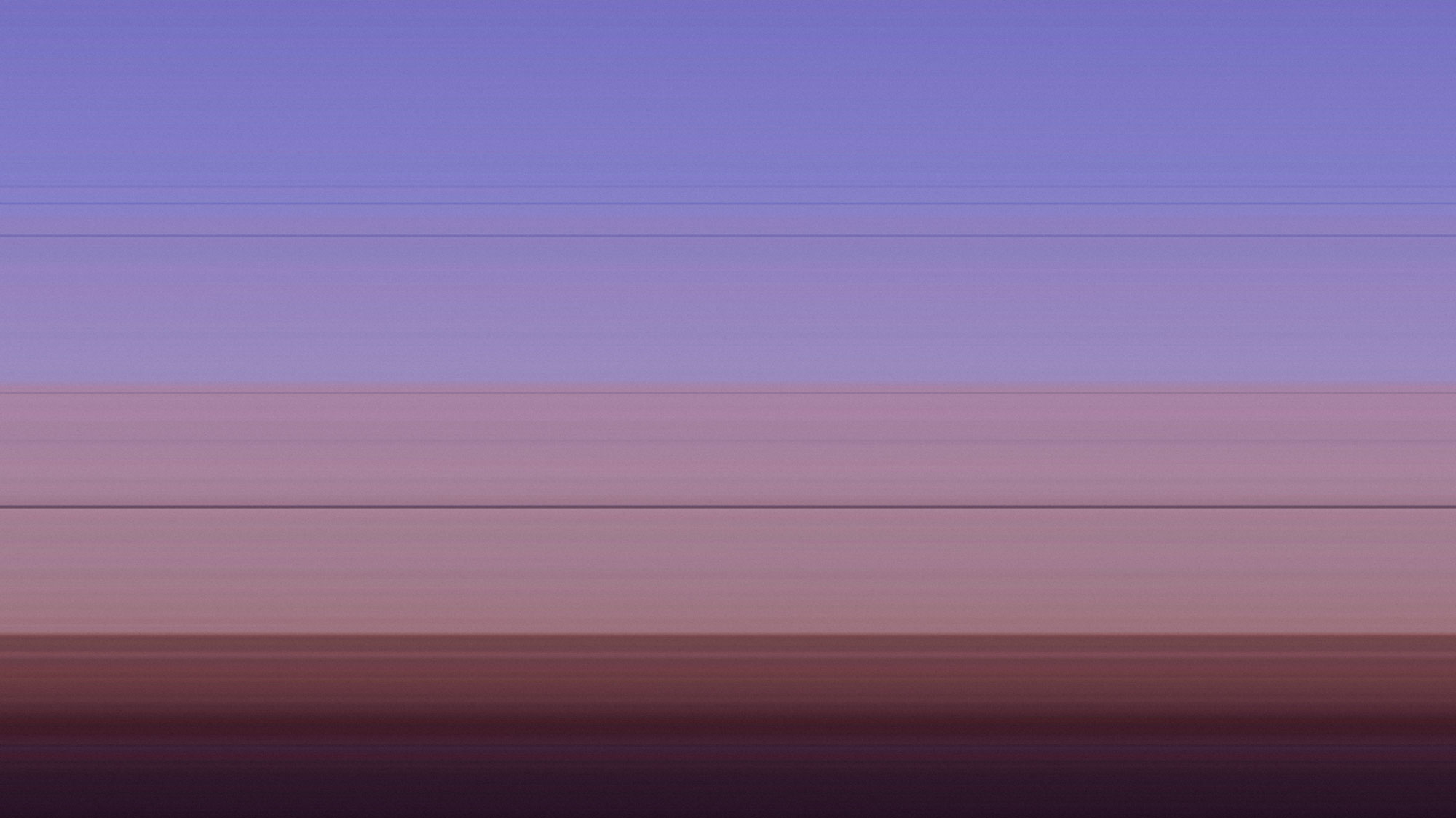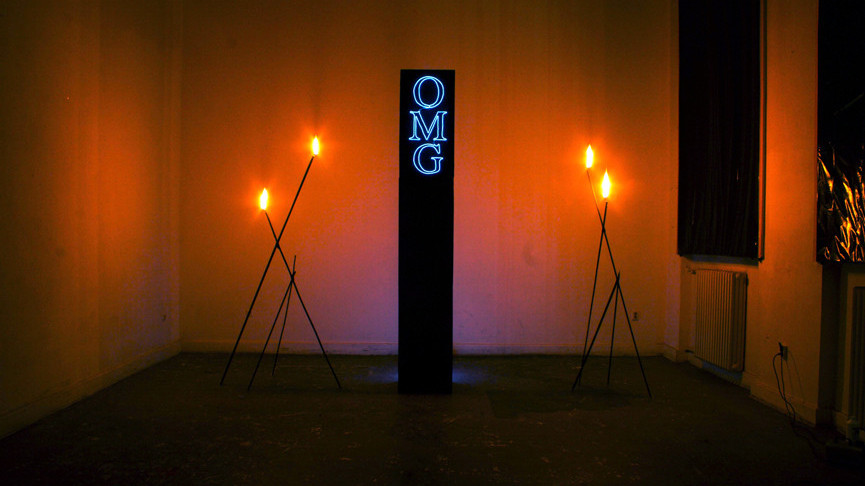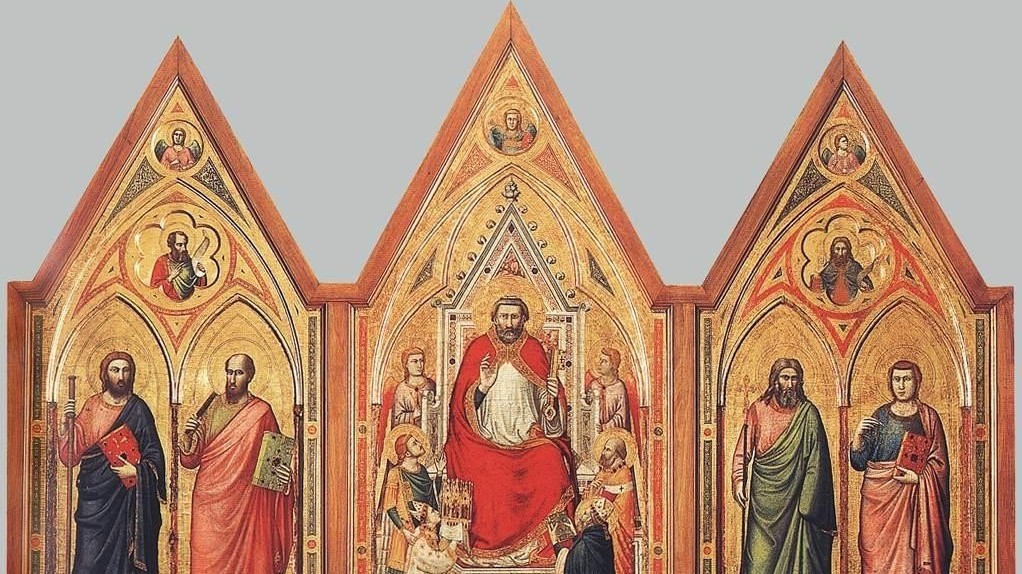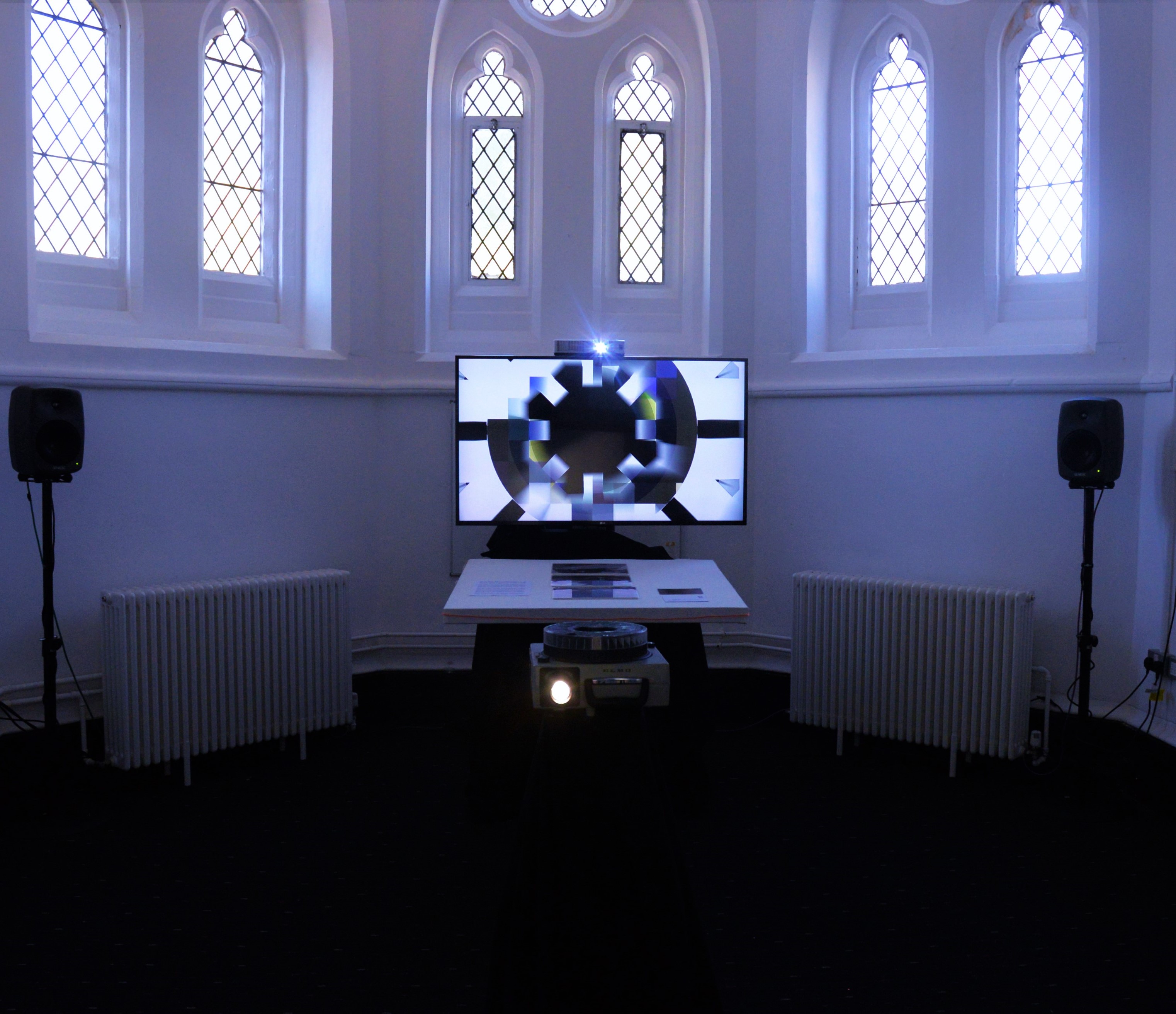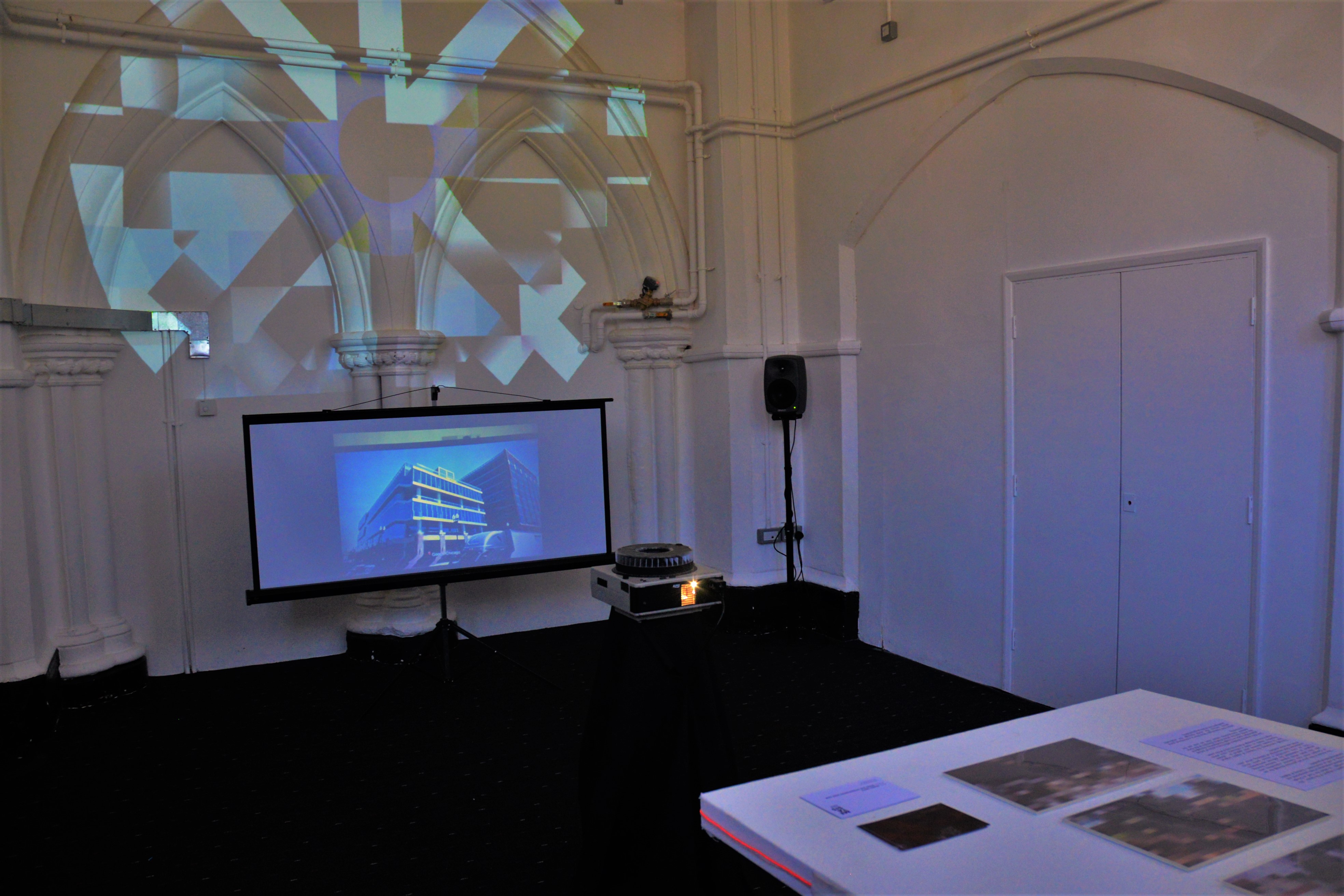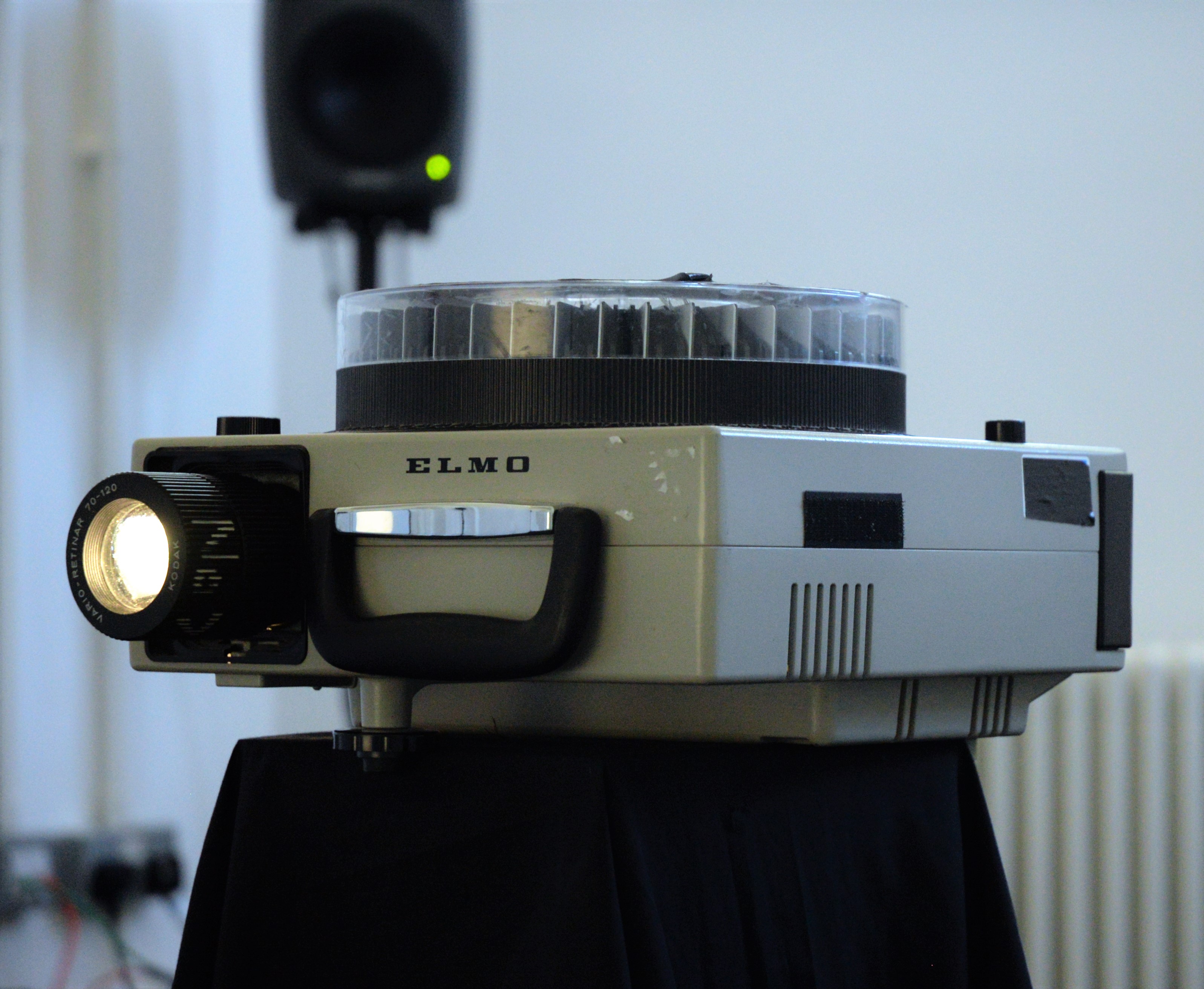When Old Technologies Were New
An audiovisual installation utilizing technologies from the past and present to imagine and propose a religion of the future. The landscape of scientific and artistic progress is visibly fluid, and by the time a new product is fully realised, the next generation version is, more often the not, in the latter stages of development. This perpetual cycle of technological rebirth sets an impossible goal of 'keeping up', and fosters increased reliance and dependance on inventions we once lived happily without.
In retrospect, humanity has a tendency to categorize the times that have passed in terms of the available technology - the Stone and Bronze ages, and the Industrial and Digital revolutions all being prime examples of this. To me it seems that in the current era the rate at which technological progress is achieved is ever increasing and at an exponential rate, providing a constant state of flux in which we are always on the verge of some ‘next future’. Regardless, smartphones, computers, and other devices have become objects of true devotion and the new generations of these products are staggered and drip-fed to the avid followers and consumers to fuel the capitalist society as efficiently as possible.
This work proposes a ‘Church Of Technology’ that holds Google as its one true God. The omnipresence of the multinational corporation, combined with the all-seeing nature of its Earth satellites, and its often cloud-based existence, offer slightly disturbing biblical parallels. This project is a meditation on the way in which the world has become increasingly secular only to adopt technology as a new form of mainstream religion.
For this installation I wanted to create a work of reimagined devotional art inspired, in part by the religious triptychs of the likes of Duccio, Giotto, and Cimablue, as well as much more recent works such as Aids 3D’s OMG Obelisk and Yann Novak’s Stillness.
While on one hand, the OLED and 4K displays of today provide us with seemingly pixel free images, on the other, all that the computers which utilize them can see and understand is precisely that fluctuation of pixel and colour data that makes up the image as a whole. That is, until they begin to learn. The video shown within this installation seeks to provide an imagined view from the perspective of a computer as it begins to think for itself through the eyes of this new religion.
The main visual aspect of the piece is generated through exploration of Google Earth’s ‘Street View’. The criteria for exploration was quite simple - to travel to randomly generated points around the globe to simulate the ability of being in many places at once. By using the addon ofxAwesomiumPlus I was able to create a browser within openFrameworks through which I connected to a version of Google’s application. This allowed me to create a series of test videos documenting a predetermined range of common environments (city, suburbia, wilderness).
The videos produced were then loaded into Processing to split them up into a sensible amount of pixels to send out via OSC message for the purposes of sonification. The process of pixelation, while necessary, became integral to the aesthetic function and concept of the work. Through the simplification of the images to a level that could be used for basic machine learning, it not only served to reinforce the common language of data and information that all computers deal in, but to represent the lack of broad spectrums of colour and accurate perspective in the early religious paintings and frescos that partly inspired this work.
The Processing sketch allowed me to send pixel data out to the machine learning program Wekinator, which, once ‘fully trained’, sent messages out to Pure Data where I’d created a patch to sonify the output. The sound is based around the idea of a computer becoming aware of itself, and able to make sense of the information that passes through it. Granular synthesis enabled me to make use of a variety of field recordings chosen as much for their conceptual meaning as for their sonic qualities.
Granular synthesis is a method by which sounds are broken into tiny grains, and then redistributed and reorganised to form new versions of themselves. In this case, the samples that are used for granulation are determined directly by what the computer sees. If the landscape is busy with colour and representative of a city then electromagnetic recordings of the emissions from the roof of a server building can be heard. If the scene is placid and predominantly green in colour then the sound of birds can be heard through the noise, providing a calming respite from the buzz of the city. Conversely, if the horizon contains mainly brown and yellow pixels with the occasional scatter of colour, then recordings from a street market in Chiang Mai, Thailand mesh with the odd hum of RAM from an old PC.
The other audio present in the installation are recordings of ancient Byzantine chants which have been through a digital process called convolution which allows for the features of one sound to be applied to another. In this case I took the features from Apple’s classic text-to-speech voices and applied them to the religious chants - through this I hoped to create a cybernetic hybrid character which sings joyous and solemn praise to it’s Lord Of The Heavens.
Juxtaposed with the HD video will be a pair of 35mm slide projectors displaying further exploration of our virtual world, albeit rather more focused. I made a series of pilgramiges using Google Earth to the companys various headquarters around the world and along the way took 'holiday screenshots' documenting the relgious journey. The method of presentation is both nostalgic and functional, and the resulting noise and light of the machines themselves serves as an analog reminder of the 'real' in what quickly becomes a sea of virtuality.
To me, the resulting video and audio is reminiscent of what a juvenile computer brain may imagine the outside world looks and sounds like through the scraps of information that they have picked up throughout their user’s interaction with the web. While the idea of a computer becoming sentient and inquisitive overnight while their owner is none the wiser may certainly seem well within the realms of science fiction, advances in the area of Artificial Intelligence are perhaps some of the most important work being done today. The technology that allows robots to learn independently and then upload their new knowledge to the common ‘cloud brain’ that others can share is already here. The relatively untapped potential of unsupervised machine learning, the increasing complexity of everyday devices, and our societys ensuing reliance on the structure of technology is undoubtedly going to continue to impact on our lives only more so. This project asks the question - what should this mean for the next generations of artists and thinkers?
Source code: Gitlab Download
References:
Yann Novak
http://www.interviewmagazine.com/art/aids-3d-new-museum-generational
Marvin, Carolyn, When Old Technologies Were New: Thinking About Electric Communication in the Late Nineteenth Century, Oxford University Press, U.S.A (1990)
Apollonio, Umbro, ed. Documents of 20th Century Art: Futurist Manifestos. Brain, Robert, R.W. Flint, J.C. Higgitt, and Caroline Tisdall, trans. New York, Viking Press (1973)

































































